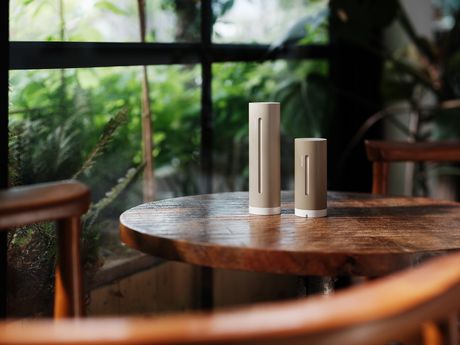Oil filled radiators: how do they heat?
Oil filled radiators are a certain type of electric inertia heater. They’re efficient and effective and can be purchased at fairly low prices - not bad, overall!
Vitally, oil filled radiators operate with high levels of inertia. This means that this type of heater accumulates a lot of heat while it’s turned on, storing heat up inside itself while heating the surrounding room. Later, once the oil filled radiator has been turned off, it will continue to emit this stored heat into the room. That’s the key benefit of high inertia! It ensures great, long lasting levels of thermal comfort in the room.
An element of the oil filled radiator called a heating core stores up this heat while it’s on. Then, the heating core (which can actually be formed of a liquid component, such as high performance mineral oil) transfers this stored heat to its metal casing. From there, the stored heat is transferred to the walls of the radiator and, eventually, its surroundings via radiation.
So, oil filled inertia radiators operate in 4 key stages:
- The electrical resistance elements in the radiator heat up while the radiator is turned on
- This heat is transferred to the liquid heating core, then to its metal casing
- The heat is transferred to the walls of the inertia radiator and into the surrounding room
- Once the oil filled radiator has been turned off, it continues to gently and steadily heat the room via its inertia
What are the advantages and disadvantages of oil filled inertia radiators?
Oil filled radiators possess certain advantages, given their status as inertia radiators. However, they also have specific disadvantages, given they are electric heating devices. So, before installing oil filled radiators in your home, it’s important to read through all the plus points and minus points.
Pros of oil filled inertia radiators
- Practical, handy and easy to install home heater options
- Portable heater models
- Simply plug into an electrical outlet to start heating
- Inertia provides additional heating even after the heater is turned off
- Easy to use
- Affordable purchase prices available
- Oil filled inertia radiators do not dry out the air in the room they’re heating
- Constant, gentle, lasting diffusion of heat, increasing thermal comfort
- Quiet operation, unlike other electric radiators
- Easy to maintain and clean
- Quality heater that provides homogenous heat distribution throughout the room
Cons of oil filled inertia radiators
- Design is not the strong point of oil filled radiators (they’re not as decorative or classy as cast iron traditional radiators, and they’re not easy to hide given their significant size)
- Fairly slow rise in room temperature once they start heating (you’ll need to factor in around 10 minutes for the radiator to heat the room to your desired temperature after you’ve started the heating process)
- High power consumption - watch that electricity bill!
- Designed to contribute additional, auxiliary heating only (oil filled inertia radiators cannot replicate or replace the function of a central heating system in your home, that runs on wood, oil, solar power, and so on)
- High levels of heat in the walls of oil filled radiators can cause burns if skin comes into contact with them
- Despite fair efficiency levels, oil filled radiators can only produce enough heat to raise the temperature in up to mid-sized rooms
- Little choice among oil filled radiators in terms of design, performance or technology level
Control your electric heaters remotely with Muller Intuitiv with Netatmo, the connected solution for electric heating! The connection module is easy to install, allowing you to monitor your electric heating consumption at all times. Then, you can optimise your home heating levels room by room, ensuring you’re only using - and paying for - exactly the levels of heating you need!
Are oil filled radiators the right option for you?
If you’re thinking about investing in oil filled radiators as an addition to your home heating, consider the following questions to see if they’re the right choice for you:
- Are the rooms you want to add extra heating to the right size to really feel the effects of an oil filled inertia radiator? Remember, oil filled radiators only provide effective additional heating in up to mid-sized spaces
- Will the relatively low purchase price justify your oil filled radiators’ high, potentially very expensive electricity consumption?
- Will you be able to easily transport the radiator to and within your home? There are many portable oil filled radiator options, but they do weigh quite a bit
- Do you have children or pets at home that could accidentally burn themselves on the hot walls of your oil filled inertia radiator? This could be a significant safety hazard, so is well worth bearing in mind
If you’ve considered all the questions above and have your heart set on purchasing oil filled inertia radiators to help with heating your home, it’ll be a fairly easy choice - there simply aren’t that many oil filled inertia radiator designs to choose from! It’s performance levels and size that change, really, so you’ll need to know your heating requirements and room dimensions before you make your purchase.
Oil filled radiators offer some of the best levels of inertia among all the electric radiators out there. As such, oil filled radiators are a fairly speedy and effective heating option, but you’ll need to watch the mounting costs of electricity usage! However, this is still rather minimal for great levels of auxiliary home heating.


